Power of Culture Blog
Creative Youth Development Organizations in this Challenging Time
Their concerns, needs, and wisdom
Amy Chu, Program Officer
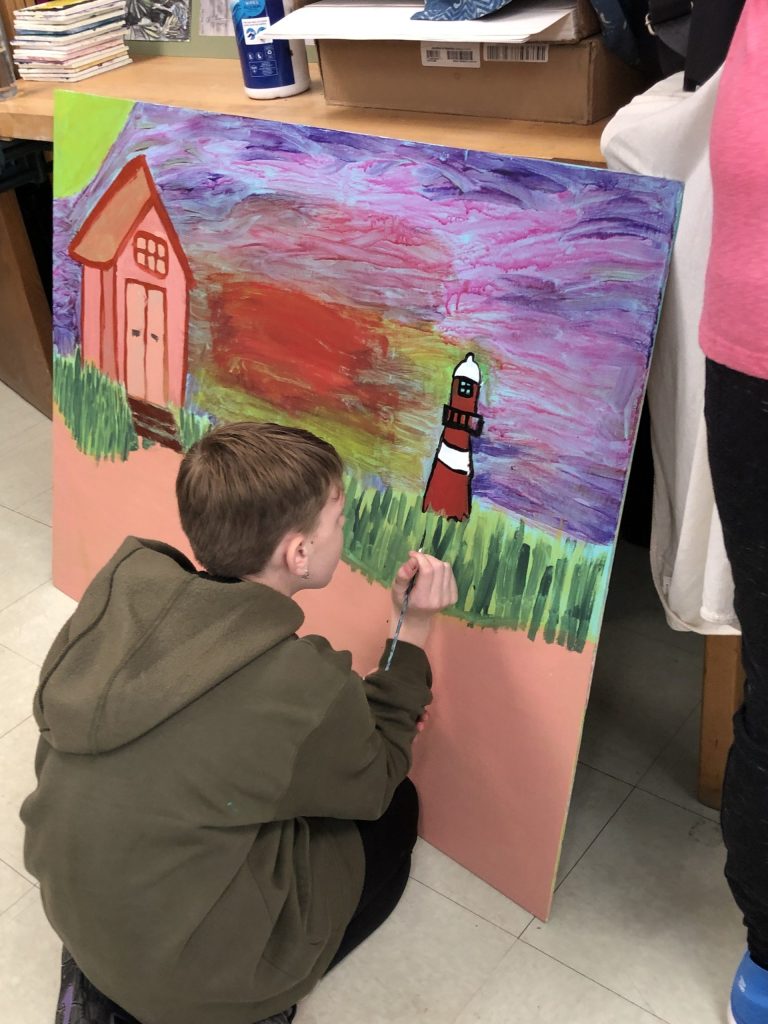
STARS Residencies support creative learning residencies of three days or more at Massachusetts K-12 schools in the arts, sciences, and humanities with teaching artists, scientists, or humanists. Any Massachusetts school serving grades K-12 is eligible to host one residency per school year.
The STARS Residencies 2022-2023 cycle, totaled $1,428,100, and brought 186 artists, scientists, and humanists into 274 schools across Massachusetts. These cultural partners engaged with more than 30,000 students in creative learning during the 2022-2023 academic year.
As schools and cultural partners prepare to apply for Fiscal Year 2024 (FY24) STARS grants, we thought it may be helpful to provide applicants with data from FY23 final reports to show how residency design can align with the Department of Elementary and Secondary Education’s (DESE) Educational Vision.
Although it’s not possible to spotlight all 274 residencies, organizations, and schools that reported back to us about their STARS experiences, the facts and figures below at least summarize the average residency’s funding and engagement in schools. In FY23 there were a wide range of disciplines represented, with the top five most popular residencies being in music, science, multidisciplinary topics, theater, and visual arts. Science represented 26% of residencies, science 20%, multidisciplinary topics 18%, theater 11%, and visual arts 10%. Please note that these do NOT reflect our funding priorities.
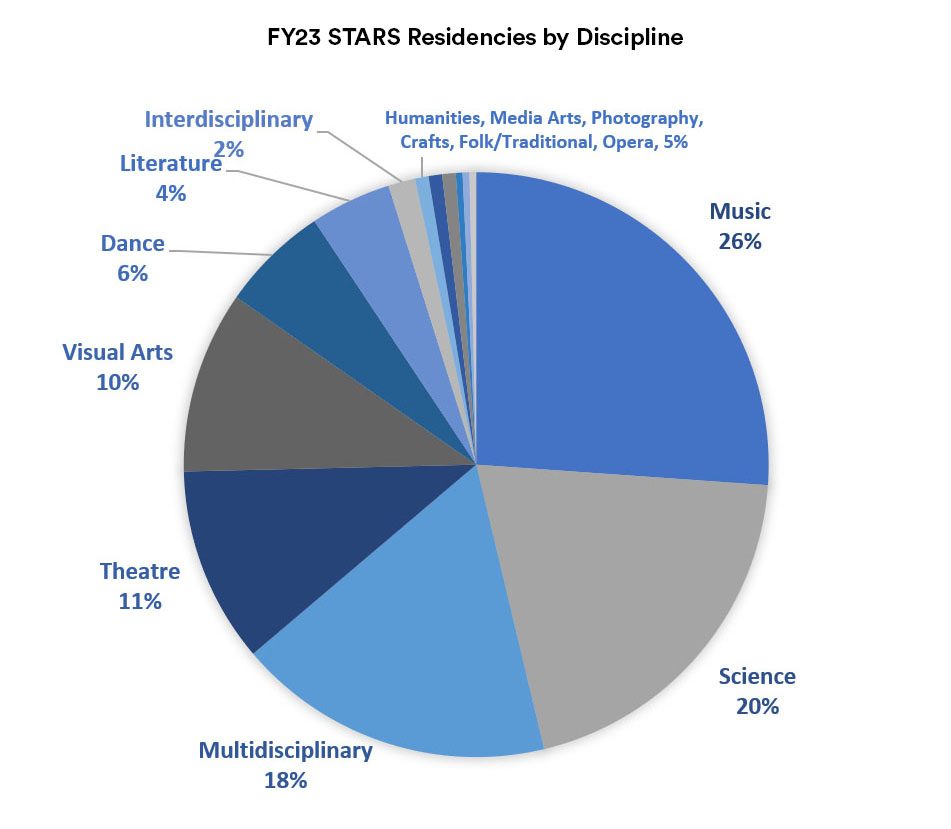
Teaching artists engaged with an average of five classrooms for 56 sessions over a period of 24 days in school. That means, on average, each classroom gets more than ten sessions of engagement with the resident teaching artist, scientist, or humanist. This shows that even though the minimum requirement for STARS is three sessions, cultural partners and schools prefer longer, sustained engagements.
In looking ahead to FY24 we remind applicants that the most successful residencies we are those that reflect the goals of the school rather than the makeup of past residencies. We invite applicants to treat this data as inspiration rather than as a blueprint.
We are proud to report that STARS Residencies fostered more than a basic understanding and appreciation for topics in the arts, sciences, and humanities. Young people also made deep connections to themselves, their peers, and the world around them. These outcomes directly align with DESE’s Educational Vision by creating opportunities for Deeper Learning.
In DESE’s Educational Vision, DESE writes that Massachusetts students will:
By integrating the youth-focused, creative, and hands-on teaching practices of cultural partners (including both organizations and individual teaching artists) into school classrooms, STARS Residencies created lasting connections between organizations and schools, teaching artists and classroom teachers, and young people and their communities.
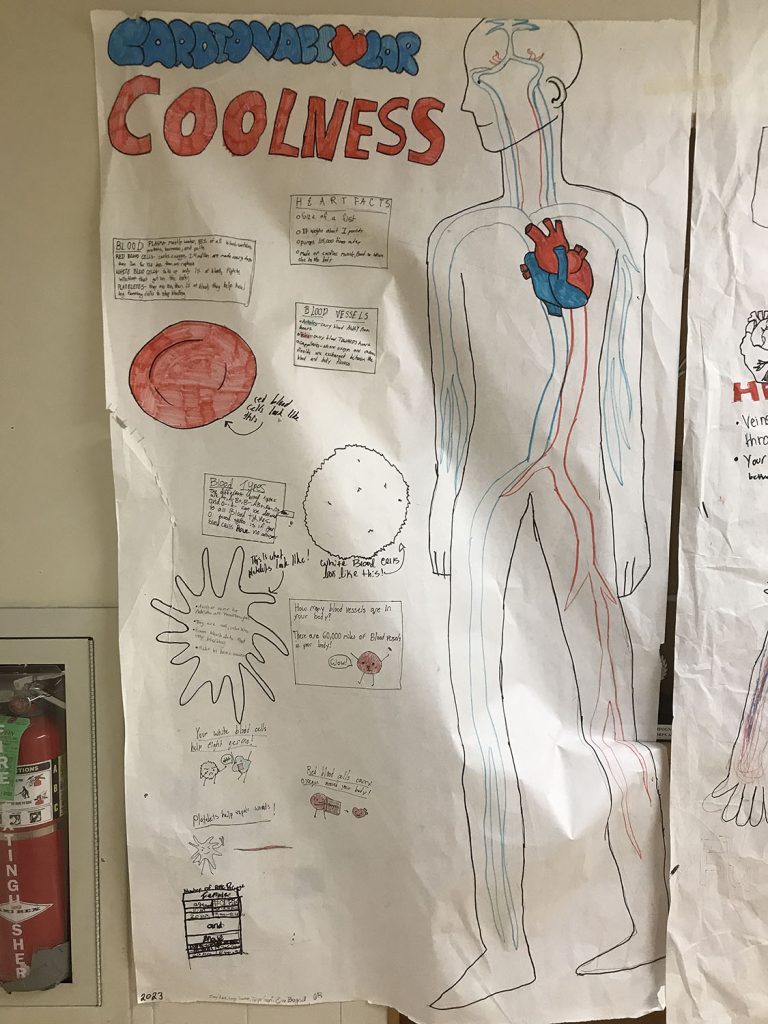
“Attain academic knowledge and skills: achieve in a comprehensive and diverse range of subjects and apply their competencies in relevant, real-world contexts.”
Students who participated in a STARS residency showed an ability to learn and challenge themselves because of extra time and instruction with teaching artists. One music residency reports that, “Students developed strong fundamental skills in all areas of playing…and they developed as musicians at a much faster rate because of our amazing teaching artists.” Residencies are uniquely focused, and many residencies allow students to work with multiple teaching artists, resulting in more learning time and attention.
Residencies also incorporate various teaching and learning styles, which may reach students who learn differently from traditional classroom settings. An environmental science residency describes a 3-D sculpture activity inspired by nature, with some students electing to build “a beach scene” and another creating “a horned beetle with multiple leg joints and prey.” Though this was a science residency, students used hands-on, imaginative, and artistic modeling to demonstrate their learnings.
“Understand and value self: know their own strengths, interests, and areas of growth, be self-aware, be a self-advocate, and make responsible decisions.”
As young people navigate their development, it’s vital that they feel connected to themselves and can advocate for their needs. Residencies are often designed to represent the students’ identities and lived experiences. A multidisciplinary residency reports, “The students in this class were all Spanish-speaking, newly-arrived immigrants. One of [our] goals is to provide artist residents who represent the students we serve. We were extremely happy to be able to provide [the school] with a local artist who not only spoke Spanish but also recently immigrated from the Dominican Republic… These students were so excited to see Carmen each week and cheered for her each week when she entered the classroom.”
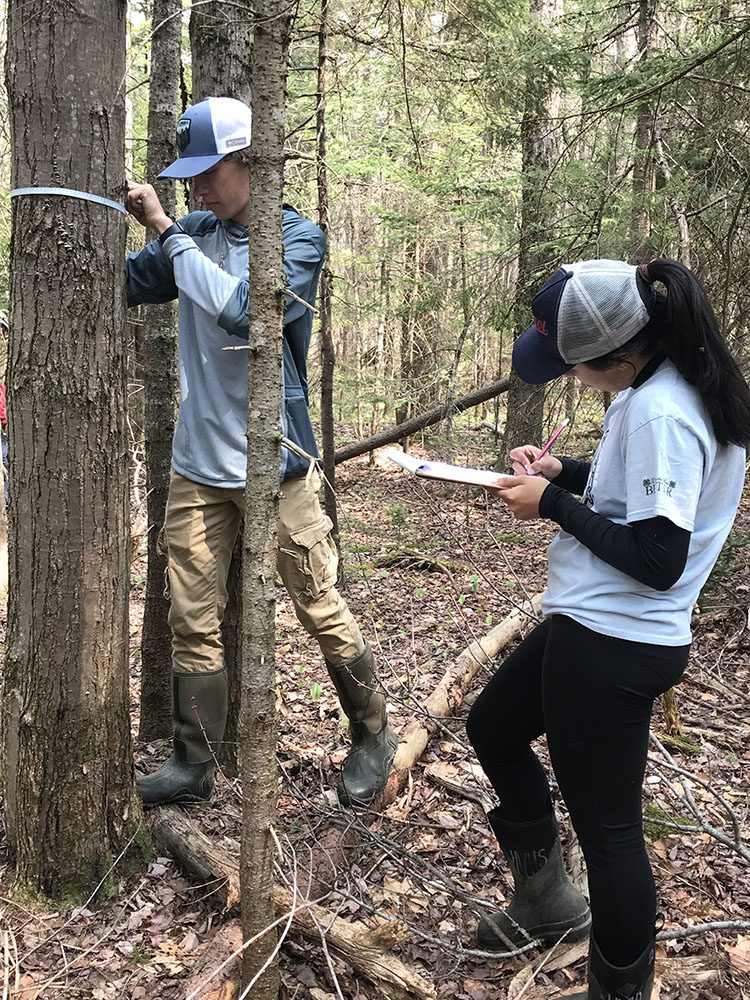
This residency design emphasizes that language is not just integral to an educator’s ability to communicate, but that the teaching artist’s relatable lived experience as an immigrant from the Dominican Republic could connect to that of the students.
“Understand and value others: understand differences and multiple perspectives, empathize with others, and build connections with peers and adults.”
STARS Residencies final reports were honest about post-COVID struggles in school. Many students lost two or three valuable years of social development to the pandemic. One teaching artist reports, “This loss has resulted in much more developmentally inappropriate behavior, such as first graders having prolonged tantrums. Conferring with other teaching artists and teachers, I have heard the same problem regarding socialization everywhere. For economically and socially stressed communities, the situation appears to be generally more severe.”
While another residency notes that the return to in-school learning will require more resources and support for teachers and schools in the coming years, certain STARS Residencies already begin to address these issues. Why are residencies specifically effective at facilitating social development between peers?
A theater residency report begins to answer these questions. Residencies are often open-ended enough to foster a sense of belonging, for all interests, perspectives, and strengths. A theater residency describes, “… the fact, that each year, students of all abilities in dance, theater, and music, want to ‘take a chance’ at something new… Everyone gets a part, and that includes people who do not wish to perform but wish to help behind the scenes.” This shows that even though residencies may not inspire ALL students to become artists, musicians, scientists, or historians, students are encouraged to work together and support their peers.
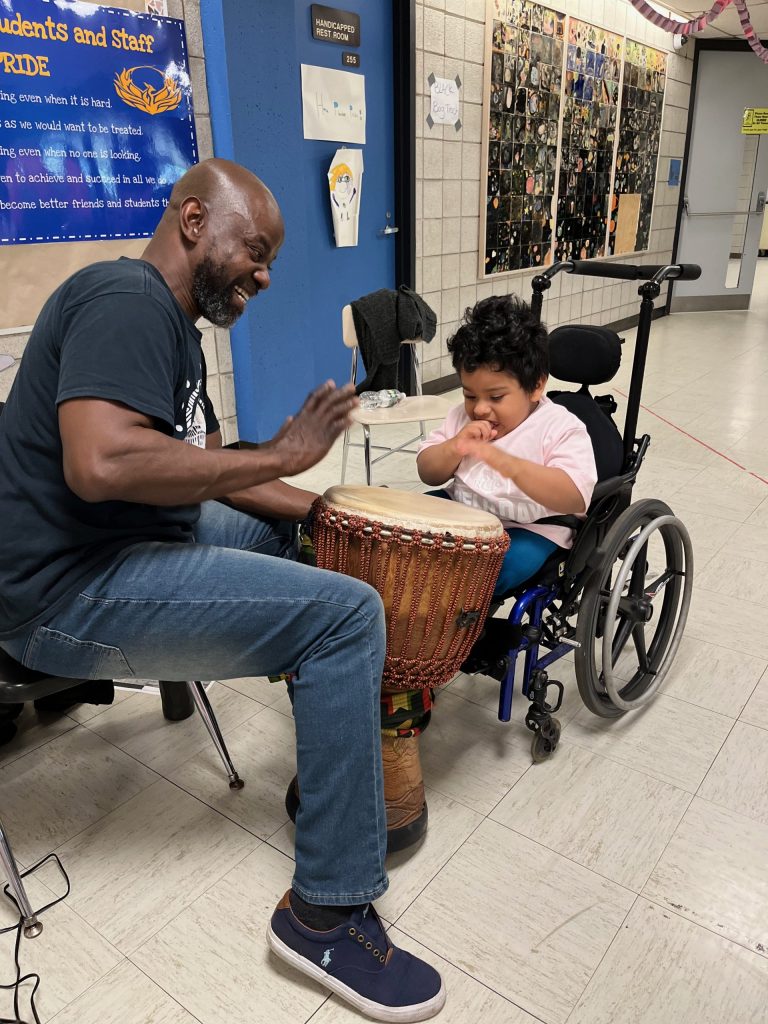
“Engage with the world: understand and think critically about local, national, and world events and societal systems; and creative positive change through civic action.”
STARS Residencies take students outside of the classroom to engage with the world around them. Some residencies do this through field trips or site visits to nature reserves, artist studios, concerts, performances, and more. An environmental science residency at a local beach reports, “Our students had background knowledge as most had visited the beach due to our close proximity, but they were not aware of the many plants and animals that make their home in tide pools. On the ride home from the field trip there was a ‘buzz’ of students sharing stories from taking a risk to pick up a rock crab to finding a sand dollar and even feeling the slime from snails.”
Although this residency took students to a local space that the students had already been to, it brought new perspective as students noticed unfamiliar details about the creatures that inhabited the beach through their learnings. Students can then appreciate and advocate for their local habitat’s conservation.
Other residencies take students further from home to showcase their work and their skills, “With all the skills they learned from these hands-on workshops they were able to craft their musical theater piece of The Wiz that traveled and competed in the National Performing Arts Festival in Orlando Studios. At the competition our students were the only urban school district in the competition. With the help from this grant our students were able to compete on the highest level in the group and solo competition.”
These students represented their school in a space that did not feature any other urban school districts and had their group work honored on a national level. Although our final report does not ask grantees to measure success through competition or awards, it’s valuable for young people to be recognized for their accomplishments and to represent their communities proudly.
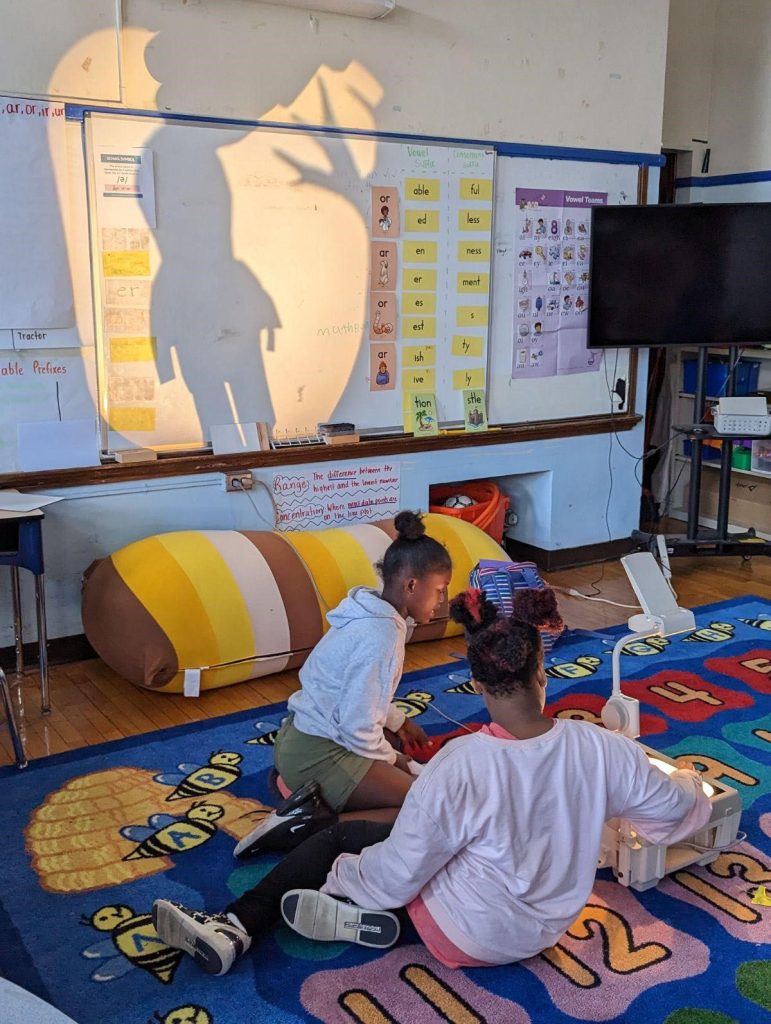
The STARS Residencies application asks for the residency design to define two learning objectives: one that is educational and another that is socially conscious. STARS final reports indicate that the residency outcomes are interwoven with other educational, artistic, social, and civic achievements. The aspects of Educational Vision also feed into each other, as demonstrated by a mural residency’s report, “This project didn’t change one or two lives; it changed the culture of my school… My students walk through the halls and are excited and inspired every day when they see the mural THEY created.” The mural serves as a reminder of inviting a unique educational experience to the school, reminding the students and the community of their powerful capabilities as individuals and communities.
For FY24, we will not be reviewing the application answers for a qualitative score. We trust that schools and cultural partners will work together to design residencies that inspire students to learn core material, apply their learnings, and connect with others. In doing so, the future of Massachusetts will have meaningful, creative experiences that catalyze key educational development goals.
Applications for STARS Residencies grants for the 2023-2024 school year are due Oct. 24, 2023.